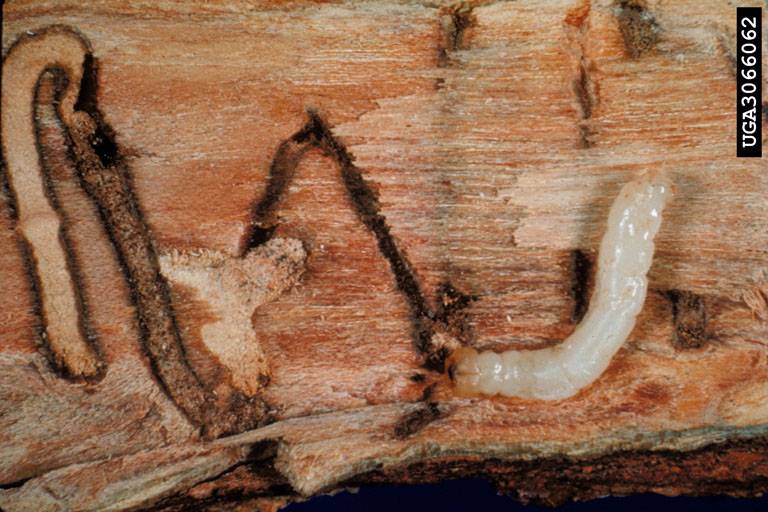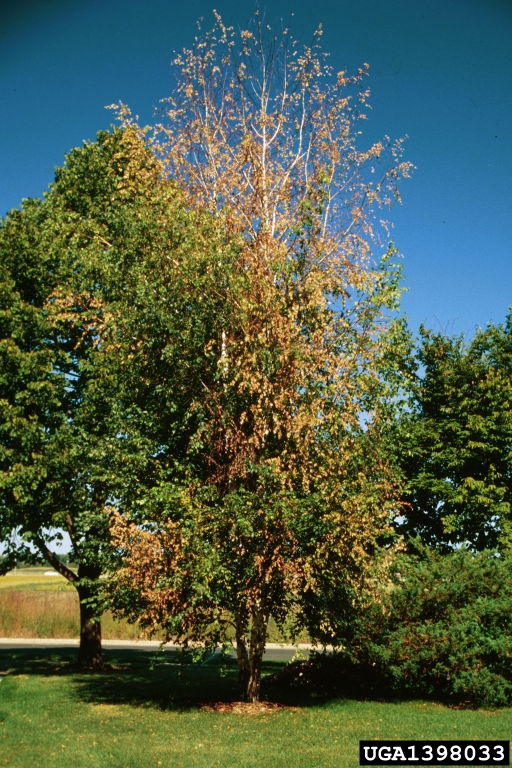Integrated Pest Management
Bronze Birch Borer
Agrilus anxius
Pest Description
- adults: 1/4 – 3/4 inch; slender; bronze black
- larvae: creamy white with an enlarged head area; tapeworm-like appearance
Host Plants, Diet & Damage
- birch, especially paper birch
- feed on phloem and etch sapwood of trunk and branches
- create serpentine galleries under the bark
- galleries may be externally visible on trunk as raised bumps
- leave diagnostic, D-shaped exit holes in bark
- can cause canopy dieback or complete tree death
Biology, Life Cycle & Damaging Life Stage
- overwinter as larvae under the bark or in the sapwood
- adults present late-May through August (peak in July)
- eggs laid singly or in groups under bark flaps
- early in an infestation, attacks are focused on smaller branches in the upper canopy
- one generation per year is typical, but may take 2 years
- prefer stressed, weakened trees
- *bronze poplar borer (Agrilus liragus) is a similar species on Populus spp.
- larvae are the damaging stage
IPM Recommendations
- Avoid planting susceptible birch species, especially paper, silver and gray birch.
- Monarch birch, Japanese white birch and river birch are more resistant.
- Keep trees well watered.
- Minimize iron chlorosis to reduce stress.
- Apply an insecticide (pyrethroid; carbamate) to stem and branches.
- Apply a systemic neonicitinoid soil drench (imidacloprid) or granular (dinotefuran) after leaf expansion.




